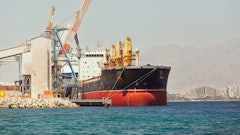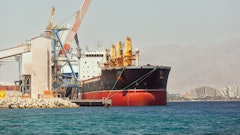
In a deep dive of container shipping demand, experts agreed that the growth in container traffic experienced a notable decline in 2022. In fact, projections for the current year also suggest a less-than-optimistic outlook. While there is optimism for a recovery, the overall rates of growth are anticipated to remain lower compared to previous decades, according to new research from Container xChange.
“The container shipping industry is facing a turning point with both challenges and chances. Trade growth is slowing down, and this year, we only expect a tiny 0.3% increase. There are uncertainties related to the economy and politics that are affecting the market. Also, the container shipping business is getting more stable and closely connected to changes in the economy. But there's some hope on the horizon - the expected increase in the space available on ships in the next three years might help balance supply and demand by 2025,” says Chrisitan Roeloffs, CEO and co-founder, Container xChange.
Key takeaways:
- The supply side of the equation revealed that the global fleet of container ships is set for expansion in 2023 and beyond. Projections indicate that by the end of 2025, the industry will boast 30 million Twenty-Foot Equivalent Unit (TEU) slots in service. Vessel slot capacity growth, a crucial factor, witnessed a 4.5% increase in 2022 and is forecasted to expand by 5% in 2023 and further by 6.3% in 2024.
- The interest in ordering new ships has unwavered. Over 80% of vessel orders placed in 2023 have been for dual-fuel tonnage, with a substantial number targeting neo-panamax vessels. However, experts cautioned that the historically low rate of scrapping in recent years is set to change, signifying a significant shift in the industry.
- The container equipment market discussions revealed that the global fleet of containers is on track to experience a slight decline in the current year, and production is expected to hit its lowest point in more than a decade.
- The underlying reason for the unexpectedly low replacement of aging containers in 2021 and the first 8 months of 2022 was attributed to supply chain congestion, where these containers were indispensable for maritime trade. However, this overhang is gradually diminishing as supply chains return to a semblance of normalcy.
- Newbuild container prices experienced a strong surge until late summer or early autumn 2021, with a 20-foot standard dry freight container's price soaring over 35% within a year. However, prices softened throughout 2022, with 40-foot-high cubes even lower than their end-of-2020 prices and 20-foot standards stabilizing at the end-of-2020 levels.


























